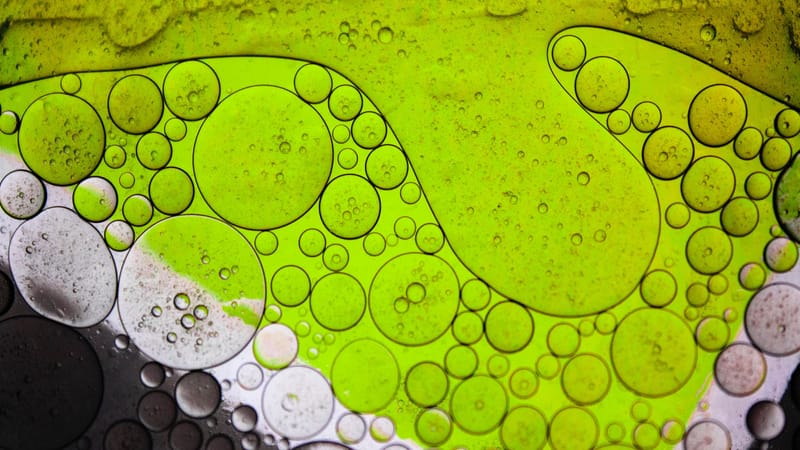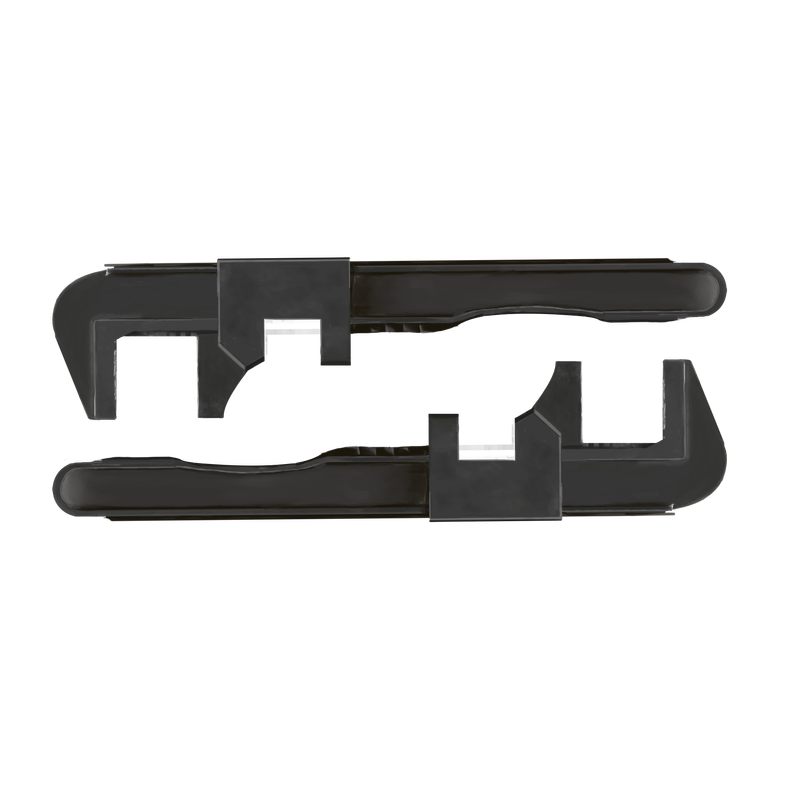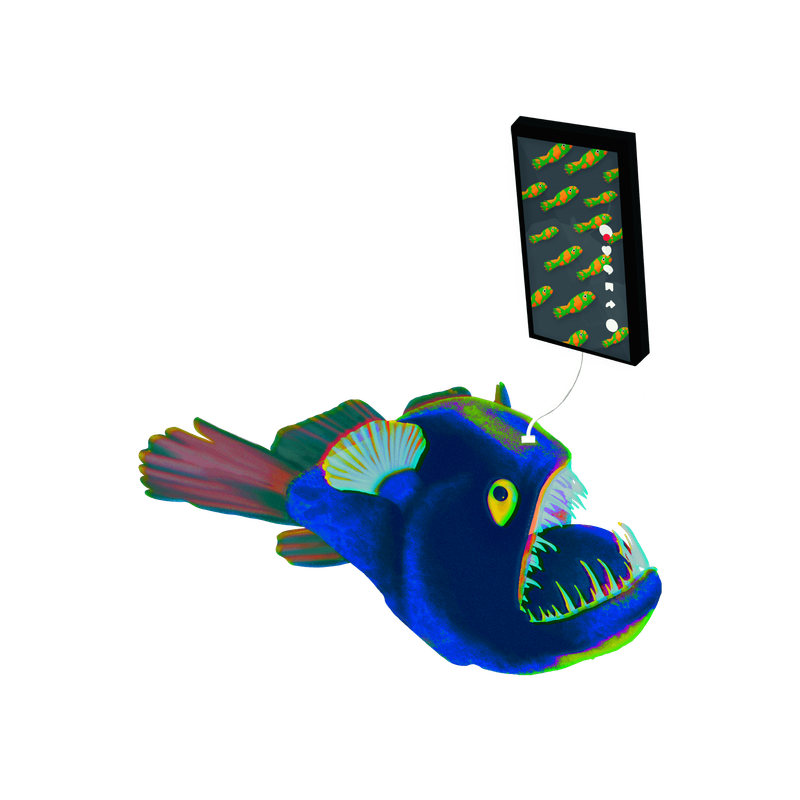To many eighteenth-century naturalists, algae were wretched organisms. They ostensibly offered no economic value, possessed no curative properties, and occupied the lowest rung in the taxonomy of Carl Linnaeus (1707–1778). His system, predicated on the number or position of a flower’s reproductive system, put the order, Algae, in the 24th or last class of his system. Whereas the first 23 classes are phanerogams, bearing their reproductive organs (stamens and pistils) for careful inspection, algae are counted among the cryptogams, literally meaning “clandestine marriage,” in which plants’ reproductive organs are either imperceptible or altogether missing. Linnaeus went so far as to say that if the vegetable world were represented as nations, algae would be its slaves.
Johann Friedrich Blumenbach (1752–1840) was among the many eighteenth-century naturalists who gave short shrift to plants in general and algae in particular. In 1779, he published the first part of the first edition of his textbook on natural history, Manual on Natural History. The Manual enjoyed 12 sanctioned editions, several translations, and became, as Denise Phillips puts it, “the most successful work of its kind in this period” (2012, 56). Yet, only 5% of this textbook on natural history was devoted to plants, even less to algae.
Given Blumenbach’s antipathy or tepid interest toward plants, his 1781 essay, “On an Extraordinarily Simple Manner of Reproduction,” was surprising. The essay reports Blumenbach’s observations on the propagation of the alga Conferva fontinalis. Today, this fresh-water, yellow-green alga is known as Vaucheria fontinalis. Though Blumenbach generally neglected the study of plants, his observations on algae played, and continued to play, a crucial role in supporting his own research program and contributed to the advent of biology. C. fontinalis was so important for Blumenbach’s science of life because it functioned as a proto-model organism: he deliberately selected the alga precisely for its epistemological and practical advantages.
My talk has three sections. First, I review the conditions which initially prompted Blumenbach to study the C. fontinalis. Second, I analyze his essay on the C. fontinalis. Finally, based on this analysis, I say why I think the C. fontinalis should be considered a proto-model organism.
The Problem with the Problem of Generation
How do living organisms come to be? This question, in the parlance of the 1700s, was the problem of generation. Albrecht von Haller (1708–1777) and Caspar Friedrich Wolff (1735–1794), taking the generation of the chick as their focus, debated this question continually in the eighteenth century.
Haller averred preformationism, which explained generation by the preexistence of an embryo created by God at the time of Creation. The embryo awaits its preordained development either in the maternal egg (as the ovists, like Haller, believe) or in the male spermatozoon (as the animalculists believe).
Haller’s version of preformation maintained that the structure of a living being has already been given, and that its further growth and development can thus be explained mechanically. Preformationism solves the problem of how to account for the origin and structure of organized beings, of how a chick emerges from what seems like an undifferentiated, homogenous mass.
The theory of epigenesis, advanced by Wolff, responds to the problem of generation in a wholly different manner. Wolff doubted the existence of Haller’s preformed germs, arguing, “What one does not see is not there.” Instead, he asserted that the embryo must be formed anew each time. What structures unorganized matter and brings forth this new embryo is the vis essentialis or essential force. It organizes matter into life.
Haller and Wolff debate the question of generation throughout their lifetimes. Despite their prolonged exchange, neither preformation nor epigenesis emerge as capable of explaining how life comes to be. Preformationists doubted the existence of the essential force, epigenesists the existence of preformed germs. Neither could conclusively solve the problem of generation.
Blumenbach himself is caught in this stalemate. He began his career by advocating for preformationism, but he converted to epigenesis after his discovery of the Bildungstrieb or formative drive. Blumenbach conceived of the formative drive as being the power responsible for giving and preserving the form that all organized bodies have while alive as well as restoring that form if damaged. The formative drive motivated Blumenbach’s attempt to intercede on behalf of epigenesis in the debate on generation, to prove once and for all its undeniable truth.
But C. fontinalis is not the organism that gets him there. It neither led to Blumenbach’s conversion nor did it inspire the Bildungstrieb theory. The organism deserving of that honor is the Hydra or polyp, a small aquatic animal that never appears to die and seems to be able to regenerate itself ad infinitum. Its (near) immortality and regenerative capacity made it a celebrity in the eighteenth century and continues to make it one in ours. Blumenbach recounted that he had been entertaining friends with this marvelous little life form, when he noticed an anomaly that led him to the truth of epigenesis and established the basis for his formative drive theory.
It’s only a year after his polyp revelations that he publishes his essay on the C. fontinalis. It, by contrast, is quite mortal and can’t regenerate. Whereas eighteenth-century naturalists gushed about the polyp as being a Phoenix rising from the ashes, Blumenbach described C. fontinalis as some green mouse fur you might find in a ditch on the side of the road. Not nearly as glamorous, but just as important.
The alga is important because it does the work that the polyp could not. Blumenbach’s observations on the polyp, which he offered in his essay on the formative drive, do not secure the superiority of epigenesis. These observations do not succeed, because Blumenbach has not yet dispelled the seemingly unassailable strategy of preformation to appeal to an ever smaller, just invisible, preformed germ. Yet, C. fontinalis changes things.
Algal Savior
Nothing could make the existence and activity of the formative drive clearer to the impartial eye, Blumenbach proposed, than an organized body that grows and reproduces quickly as well as having a structure that is semi-transparent. And this is what C. fontinalis offers. He writes:
An example of this kind in the plant kingdom is given in the extremely simple sort of generation of a just as simple water plant, which is frequently found, especially in the springtime, etc., and from whose mere description even the unbotanical reader will be able to be reminded of it. The whole plant is comprised of a simple, (never divided) mostly straight, nearly half-inch long, bright-green fine filament that usually roots itself in the mud with its bottom end. (1789, 75–6)
In this short passage, which mirrors sections of the alga essay, Blumenbach employs the adjective “simple” twice to describe the plant and once to describe its reproductive process. The alga is essentially a straight line that is internally and externally identical, a fact known because of its translucency. These features of the alga—coupled with a quick reproductive cycle (completed in around 48 hours), every stage of which is easily visible—make it exceptionally observable.
Whereas the chick embryo, the object of Haller and Wolff’s debate, had the disadvantage (relative to observation) of beginning within an egg (within a hen), nothing of C. fontinalis is barred from view. Blumenbach writes, “Even under the strongest magnification and in the brightest light, absolutely nothing further is to be found in the whole plant other than a fine, vesicular texture (almost like a green froth or foam), which is enclosed by an extremely fine, hardly noticeable external skin” (1781, 84). Blumenbach is here underscoring that because of the alga’s structural simplicity, there is nothing beyond what meets the eye—or the eye looking through a Wilson screw-barrel microscope. This means that if preformed germs are not observed during the generation of C. fontinalis, then they cannot be involved in reproduction at all. The organism’s generation, growth, and healing must be due to something else: Blumenbach proposed the formative drive.
Blumenbach’s choice of this algae vis-à-vis the simplicity criterion is an attempt to forestall preformation’s rejoinder that preformed germs are present but unobservable, a claim that remains tenable as long as one can appeal to the germ’s more basic, underlying structure. But, if the algae’s most basic structure is already visible on account of the organized being’s simplicity, as Blumenbach insisted, then the rejoinder is futile.
C. fontinalis also benefits the researcher by being attained simply (from ditches, springs, ponds, etc.) and by reproducing over a short time span, so that anyone with a microscope can observe the whole process many times over without a large commitment of time or resources. Although Blumenbach’s choice of algae might appear as a somewhat obvious strategy to rebut evidence of preformation, selecting a living being because of its simplicity represents a novel approach at the time.
For Blumenbach, the simplicity of the species reigned supreme, and his introduction of this criterion into the life sciences went on to become de rigueur in modern biology with the use of model organisms.
C. fontinalis as Proto-Model Organism
The easiest way to introduce model organisms is by example, and specifically some of those recognized by the US National Institute of Health. These include the mouse (Mus musculus), zebrafish (Danio rerio), fruit fly (Drosophila melanogaster), and thale cress (Arabidopsis thaliana), among many others.
More generally, model organisms are non-human species that are used to investigate a host of biological phenomena (Ankeny and Leonelli 2011, 313). These investigations are intended to yield data and theories that are applicable to other organisms or to the organic world as a whole. Model organisms provide information about the biological world beyond their selves. What is true of the fruit fly might reveal something true of the fish, dog, or human.
A model organism is different than an experimental organism. Although they agree in several ways, they differ according to their social conditions and epistemological features. Because the social conditions of model organisms are mostly inapplicable in Blumenbach’s case, I will focus on the epistemological features.
There are two ways in which model organisms differ epistemologically from experimental ones. These differences rely on the concepts of representational scope and representational target. Representational scope is how far the results from one organism can be applied to wider groups of organisms (Ankeny and Leonelli 2011, 315). In philosophical terms, this is the question of how far a type can be extended to a token; that is, What does the results concerning this species reveal about the genus in general or all organisms as a whole?
Second, the representational target is the phenomena to be investigated in the organism (ibid.). For Gregor Mendel’s experimental organism, the pea, the representational target was the phenomenon of hybridity. The difference between model organisms and experimental organisms is constituted by their respectively expansive and narrow representational scopes and targets (ibid., 315–6). This difference is illustrated as follows:
- Model organisms are always taken to represent a larger group of organisms than themselves. While a model organism relies on specific claims regarding its representational scope, claims which are necessary for it to be a model organism as such, the same does not hold for experimental organisms, of which the representational scope need not be considered at all. For example, a scientist who is investigating the physiology of hair growth in poodles does not need to consider the applicability of her results to other breeds or species or kingdoms. Model organisms, by definition, can never have such a limited scope.
- While experimental organisms have a specific representational target—that is, there is a determinate phenomenon to be understood (like hair growth in the previous example), model organisms are also not limited to a single phenomenon, but rather serve to explicate the organism as a whole in each of its processes, like its development and physiology. The model organism thale cress, for example, is used to understand flower, root, and seed production in all plants, in addition to a hundred other phenomena that extend far beyond plant life.
In sum, then, research on model organisms is intended to extend to a wide class of organisms and wide class of phenomena within those organisms. The representational scope and target of Blumenbach’s experiments and observations on C. fontinalis suggest that it is as much a model organism as an experimental one, for the representational scope that he intends for his research is living beings in general. He intends his observations on the alga to refute preformation as a viable theory and to confirm an epigenesist one by showcasing the gradual development of an alga that happens in plain view. The implication is that if this organized being is confirmed to reproduce gradually, then all organisms will also be confirmed to reproduce gradually. Moreover, the representational target is also of a wide scope. Blumenbach is not interested solely in the reproduction of C. fontinalis, but reproduction as it occurs in general. What’s more, because reproduction is a variation of growth and healing under the formative drive theory, the representational target of Blumenbach’s study of C. fontinalis extends to nearly every physiological process in living beings. He intends his results sufficient enough to show that every living being exhibits the formative drive in its generation.
In light of this distinction, we also must recall what experimental organisms and model organisms tend to share: the chosen organism must be tractable, i.e., simple to acquire, simple to maintain, simple to manipulate, and relatively simple in structure.
Blumenbach, as we have seen, stresses these lasts points. He emphasizes how simple it is to acquire these organisms: just check your local ditch! They’re simple to maintain: plop them in a jar and wait a few days. They’re simple to manipulate: put them under your microscope and have at it! They’re simple in structure: the C. fontinalis is translucent, isomorphic inside and out, and reproduces in an “extraordinarily simple” manner, as stated in the essay’s title.
Conclusion
One possible objection is the following. Thale cress, E. coli, and other model organisms are unique in having the support of large research communities, which involve a whole set of expectations concerning cooperation, definition of protocols, and a unification of researchers (Ankeny and Leonelli 211, 318). Yet, there was seemingly no mass of researchers working on C. fontinalis. If Blumenbach’s research community was seemingly a community of one, can his alga really be a model organism?
I will not try to make the case that Blumenbach’s essay launched a C. fontinalis research community, that the 1790s produced a swath of German naturalists all manically devoting themselves to bits of mouse fur. It didn’t happen.
At the same time, I do not want to suggest that Blumenbach’s work on C. fontinalis was without a reception. His study gained traction in some of the more cutting-edge investigations of plant physiology that looked to developments in chemistry and the study of electricity to furnish new methods for plant research. One such work is Johann Julius von Uslar’s Fragments of New Plant Knowledge, published in 1794, and translated into English the following year. This text affirms Blumenbach’s formative drive and underscores his evidentiary use of the alga. Uslar noted the importance of the organism being translucent, growing fast, having a simple structure, and so on (1795, 71).
Still, to account for this lack of research community and other social aspects of modern model organisms, I call Blumenach’s alga a proto-model organism, because the reasons for choosing it align with the epistemological and practical features of the modern model organism, even if social aspects, like large institutional support and research communities, were lacking. Despite the fact that everything was against this “wretched” organism, Blumenbach’s C. fontinalis became a proto-model organism at the beginning of biology.
Works Cited
Ankeny, Rachel A. & Leonelli, Sabina (2011). What’s so special about model organisms? Studies in History and Philosophy of Science Part A 42 (2): 313-323.
Details
Presented at the History of Science Society's annual meeting, Utrecht, NL, 26 July 2019. Research for this talk was funded in part by a Mellon Fellowship at the Humanities Institute of The New York Botanical Garden.





